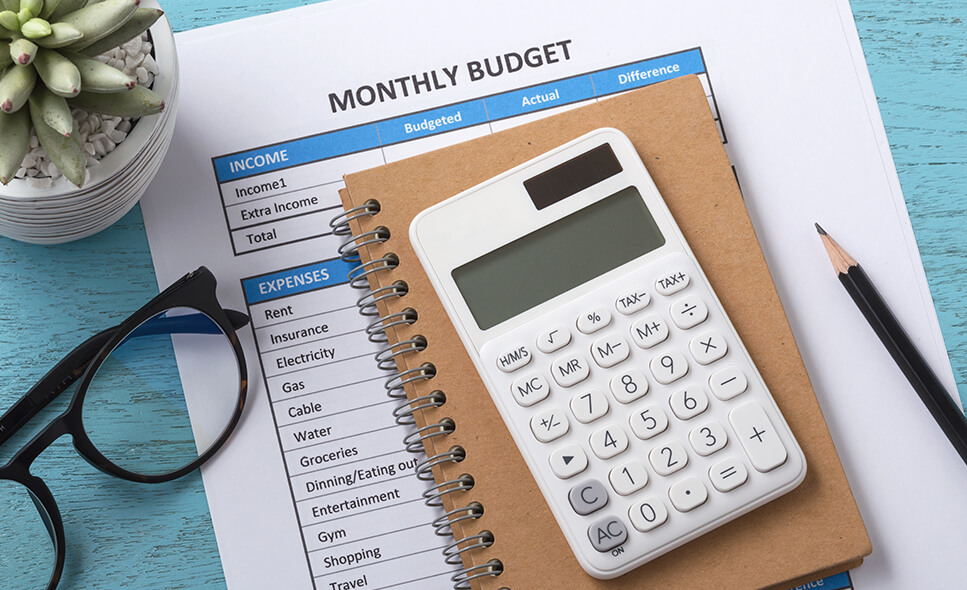If you’ve ever made it to the end of the month and wondered where all your money went, this post is for you. Most people are all too painfully familiar with the vicious cycle of cash coming in and cash going out. One minute it’s payday, and the next it’s a spiral of coming up short, leaning on credit, and falling behind on longer-term goals—or, in some cases, delaying them altogether.
While it’s easy to get caught up in feelings of shame and guilt when this happens, understand that it’s not your fault. The truth is, most people struggle with their finances because they never learned how to make a monthly budget. But you’re here now, and that’s what matters.
Money is a Language That Pays to LearnFor anyone that’s looking to understand and get a handle on their finances, budgeting is the single most valuable skill they can learn. When you take the time to learn how to budget your money, your relationship with finances begins to heal. That’s because, to gain a better understanding of your spending, you have to have some honest and difficult conversations with yourself. While this can be uncomfortable at first, it will eventually help you cultivate a healthier attitude toward engaging with your financial accounts.
It may be tempting to keep your finances out of sight and out of mind, but confronting them head on will empower you to play a more active role in achieving your financial goals. Contrary to popular belief, budgeting doesn’t have to be all about restriction. Shifting your perspective from one of going without to one of making choices that will benefit your future can get you excited about a new approach to money management.
At the end of the day, your budget should be a reflection of your values. Are you eager to pay off your student loans? Would you like to buy a house someday? Is traveling to a new country each year one of your non-negotiables? With a solid budget in place, you can accomplish all of this and more.
Bringing Balance to Your SpendingOn a most basic level, making a budget is about taking stock of how much money is coming in each month versus how much money is going out. According to MarketWatch, the ultimate goal is to break down your income and expenses accurately enough that you can plan for how much you can spend and how much you can save. It’s time to dig into your monthly take-home and spending.
To get a better understanding of how much you’re bringing in, make a list of your net monthly income. Net income refers to the amount of money you receive from your employer after taxes and benefits have been deducted. In other words, it’s the amount you see on your paycheck each pay period. Be sure to take into consideration any freelance or non-employment-related sources of income.
Once you know how much is coming in, it’s time to add up how much is going out. Start by making a list of your fixed expenses—the ones that will have the same price tag month after month without fail. Examples of fixed expenses include rent, car payments, and student loans. Be sure to prioritize these in your budget; failing to make your monthly loan repayments will have negative consequences for your credit score and overall financial health.
While some fixed expenses come with predictable prices, others—such as utilities and groceries —can fluctuate from one billing cycle to the next. These are known as variable expenses. To get a sense of how much you’re spending on variable expenses each month, look back at a few months’ worth of billing statements to determine the average monthly price for all variable expense line items.
Now that you’ve identified your needs, it’s time to list your wants. Remember when we said that budgeting isn’t synonymous with restriction? It bears repeating. If your budget doesn’t include a few line items that bring you joy—whether it’s money to go to the movies once per week or a stipend for your daily lattes—then you’ll have a very difficult time sticking to it. If your daily trip to the cafe makes you happy, you don’t have to give it up for a budget. You just have to plan for it.
Busting Out the Rule BookLooking for a little more structure to help you wrangle your spending? Say hello to the 50-20-30 budget rule. This popular budgeting plan suggests allocating 50% of your spending to needs like food and shelter, 20% toward savings and debt, and 30% toward your wants (think subscription services and monthly going-out allowances).
If your monthly needs consistently exceed 50% of your monthly income, this could be an indicator that you’re living outside of your means. See what you can do to bring things into better balance so there’s enough left over for savings and debt repayments. The importance of building up healthy savings and striving for a debt-free life cannot be overstated. According to Investopedia, U.S. Americans have a collective $14.3 trillion in debt while saving at a rate of 7.6%. This is not a recipe for financial independence.
Making Calculated MovesThe path to financial literacy is paved with Excel formulas. Now that you’ve got a grasp on your income and spending, it’s time to input your numbers into an Excel spreadsheet. Learning how to make a budget in Excel will give you a detailed perspective on your financial big picture.
Don’t worry about your proficiency in Excel—we went ahead and put a template together for you. Download our free budget worksheet in Excel and start your journey to financial wellbeing.
Looking for more expert advice and guidance? All Keesler Federal members have financial counseling services available to them free of charge. Our Financial Counselor is Kimberly Ford and she can analyze your monthly budget as well as help you with developing a spending plan. Contact Kimberly by email or call her at 228-701-1423.

